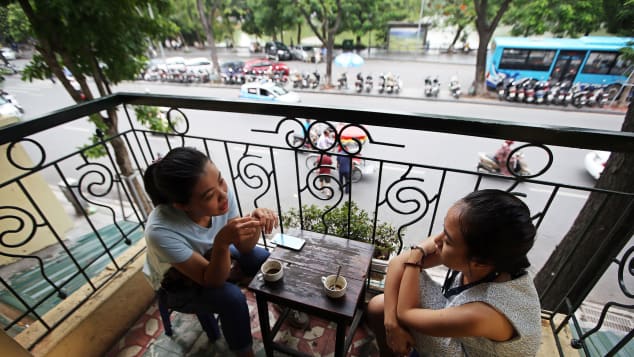Inscribed by UNESCO in 1999, Hoi An “is an exceptionally well-preserved example of a South-East Asian trading port dating from the 15th to the 19th century... The town reflects a fusion of indigenous and foreign cultures (principally Chinese and Japanese with later European influences) that combined to produce this unique survival.” What you see today is a townscape built during the 17th and 18th centuries, which still includes 1,107 timber-frame buildings and a street plan that once allowed customer access from the front of them, and convenient off-loading of goods from boats on the river. And tthe best way to explore the town is take a walk.
Cooking class
 |
| Market tour - Cooking Class |
Hội An is known for its diverse and excellent food: a legacy of the many nationalities, including Japanese, Chinese and Portuguese, that lived or traded here. It can seem that every other restaurant is offering cooking classes, but the Thuan Tinh cooking day offers more than some. After a visit to the fascinating market to collect ingredients, you board a river boat and putter eastwards along the river to this low-lying island near the river mouth, completing the final stretch by rowing boat. Then it’s on with cooking (and eating) a selection of dishes – fresh spring rolls, crispy pancakes, beef noodle salad and classic pho, say – while enjoying the village atmosphere and watching tiny basket boats navigate the water-coconut-lined waterways.
Country-side cycle tour
 |
| Cycling Hoi An Country-side |
Cars and even motorbikes are banned from the centre of Hội An, so the pushbike is king. Most homestays offer bikes to guests, and joining the many cyclists on the roads provides an instant immersion into local life. To explore further afield, Heaven and Earth cycle tours, run from a quiet street in beguiling An Hội island, across the river from the old town, offers a selection of trips into the countryside and islands close to the city. Choose from an easy few hours with just 9km of cycling along quiet lanes, lunch included, or a more demanding 50km adventure. All take in traditional villages, handicrafts, fragrant rice paddies and rickety floating bridges.
Hit the beach
 |
| Beach - Hoi An |
The nearest beach to town, Cửa Đại, has a severe erosion problem, exacerbated by winter typhoons, which saw most of the sand washed away from the seafront. An Bang beach, further north, is a more appealing prospect, with much less development and plenty of soft sand. Cycle there from town (it’s about 5km) and several persistent old ladies will try to charge you to park your bike, but turn off the main road on the lanes parallel to the sea to left or right and the many cafes and restaurants will let you park in return for purchasing a few drinks. Buy lunch as well and they’ll throw in an umbrella and a pair of sunbeds. There’s also plenty of space for those who want to rock up and lie on their towel.
See where your lunch is grown in Tra Que village
 |
| Tra que village |
Most meals in Hội An include an abundance of the fresh vegetables and herbs that make eating in Vietnam such a delight. And much of it will have come from Tra Que, the fresh-veg village between town and An Bang beach. This small farming community grows everything from fine spring onions to hefty taro root on this flat fertile island in the De Vong river. A couple of enterprises, such as the Water Wheel, offer cooking classes, foot massages and more, but it’s possible to just wander the plots, trying to identify plants and chatting with farmers. A little place called Baby Mustard, to the right across fields from the Water Wheel, will does an excellent cheap lunch. Try the “three friends” – bundles of pork, prawn and mint, tied with spring onion.
Get a tailor-made suit
 |
| Tailor-made suit |
Hoi An has been important to Southeast Asia’s textile trade for centuries, so it is no surprise that the city’s streets are filled with skilled tailors and leather goods workshops where you can have any item of clothing or accessory you like made to order. Many shops have been open for generations, producing top quality garments, but recent years have seen an explosion in poorer quality workshops – make sure to take precautions against unscrupulous business practices. Always go to the tailor’s with the specific details (material, fit, stitching, etc.) of what you want, shop around for the best rates, and never depend on hotels’ or taxi drivers’ recommendations, if you want the best of Hoi An’s craftsmanship.
Try Banh-mi takeaway lunch
 |
| Banh-mi |
Banh Mi is the Vietnamese name for the baguette. Vietnam is affected by French colonialism and that’s why they have baguettes. At every corner of the street, they sell delicious sandwiches for less than $1! Inside is a combination of delicious flavors. Pork belly, egg, Cilantro & Onion, Vietnamese mayo, pork pate, veggies like carrot and cucumber, fish sauce and chili sauce.






No comments:
Post a Comment